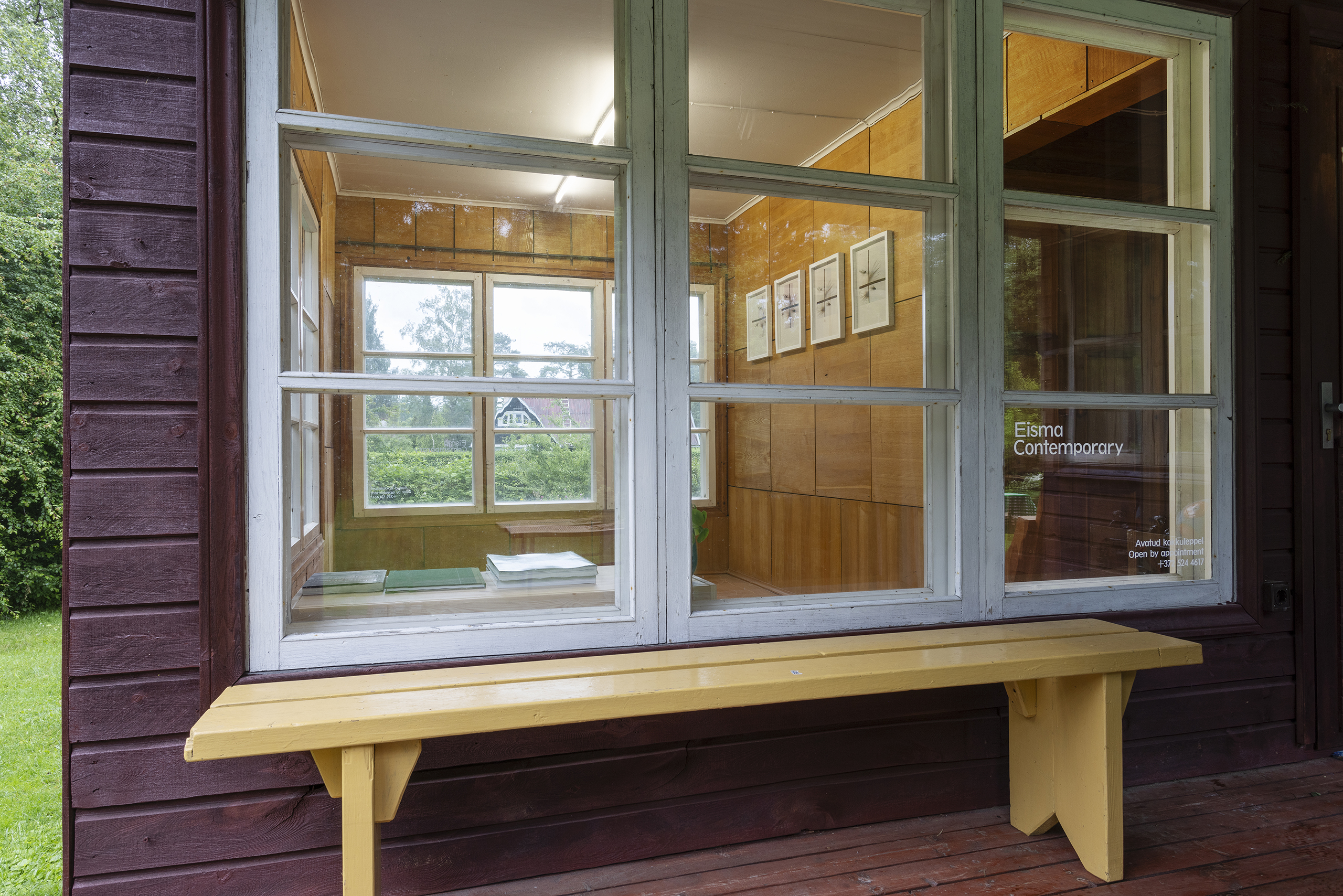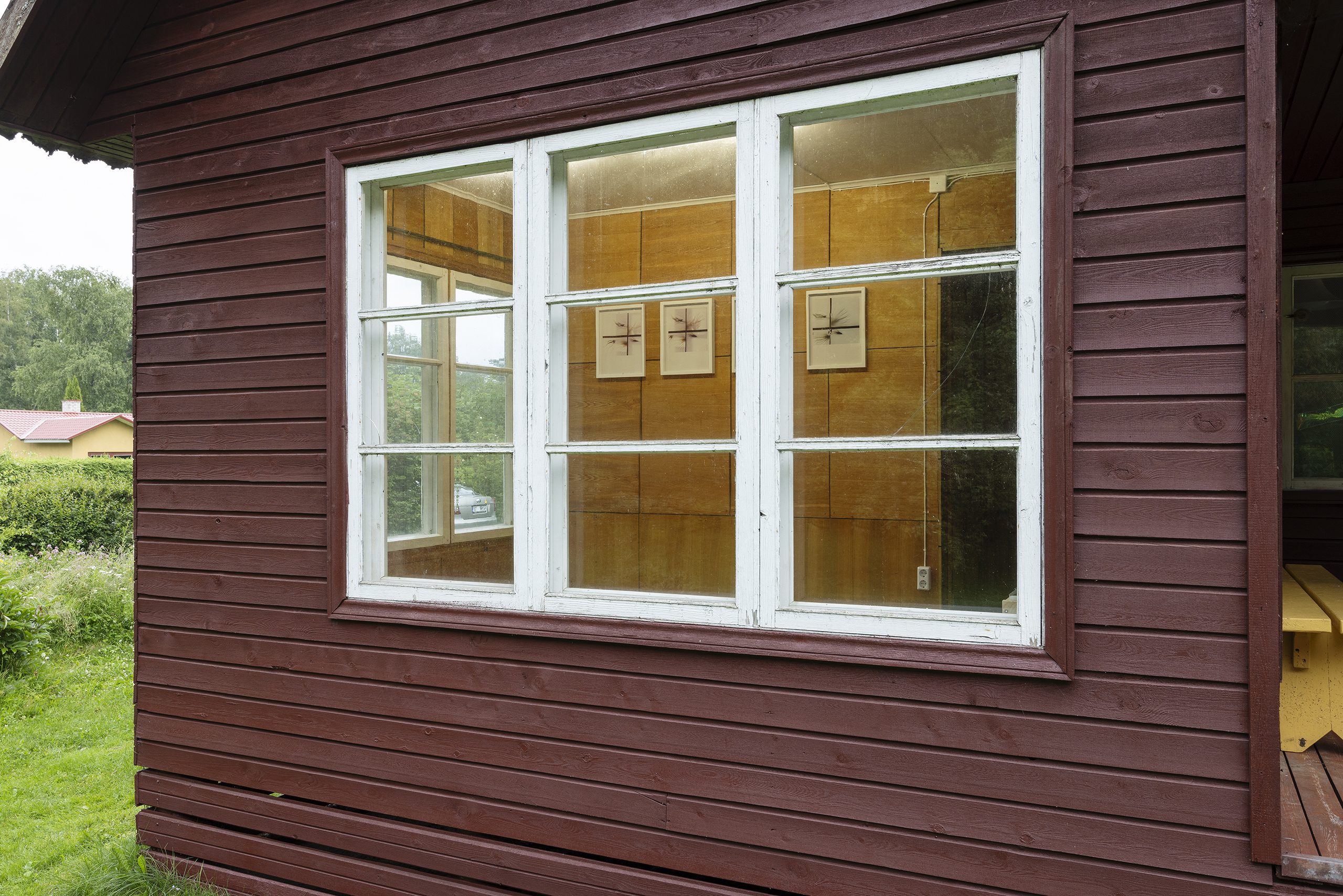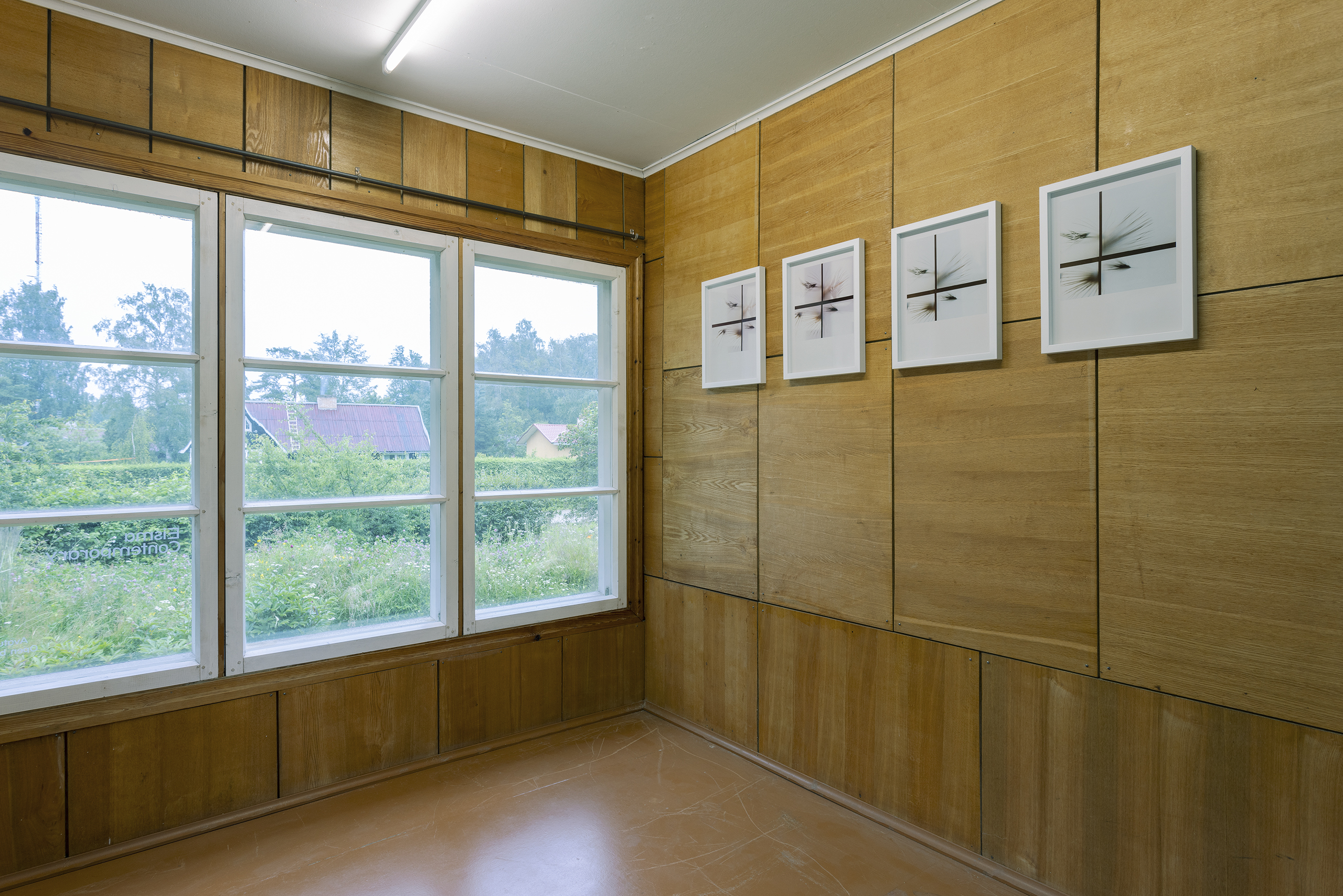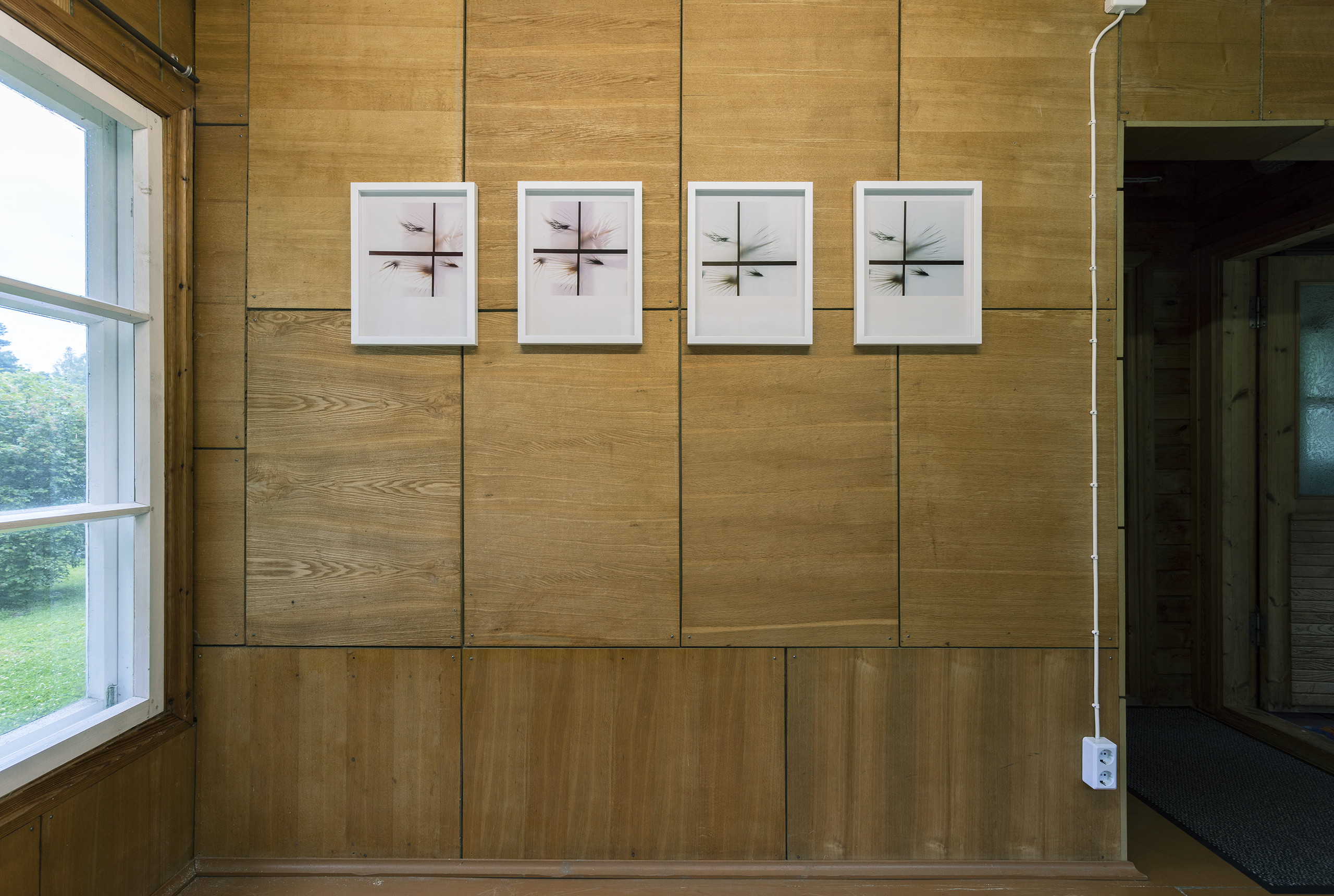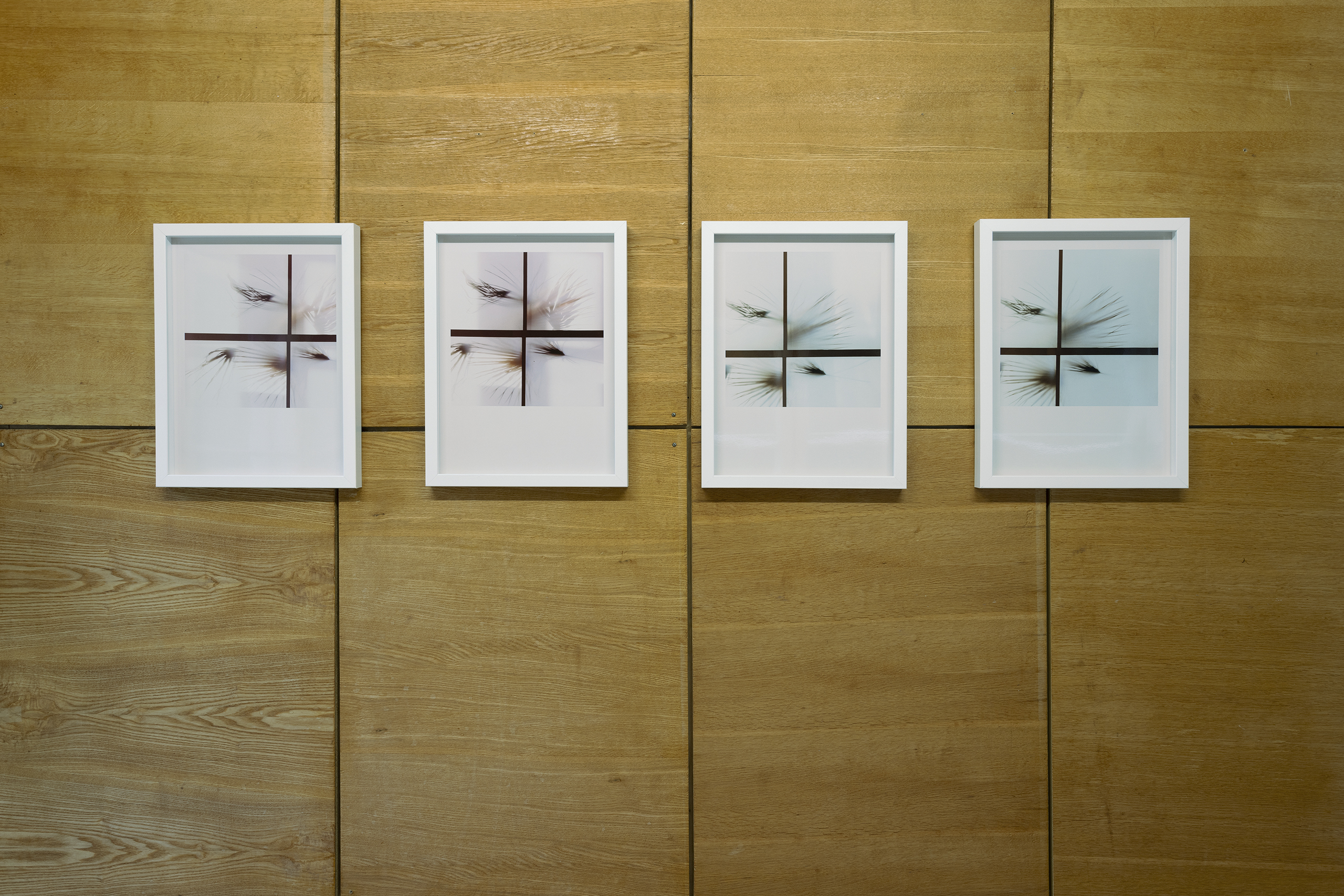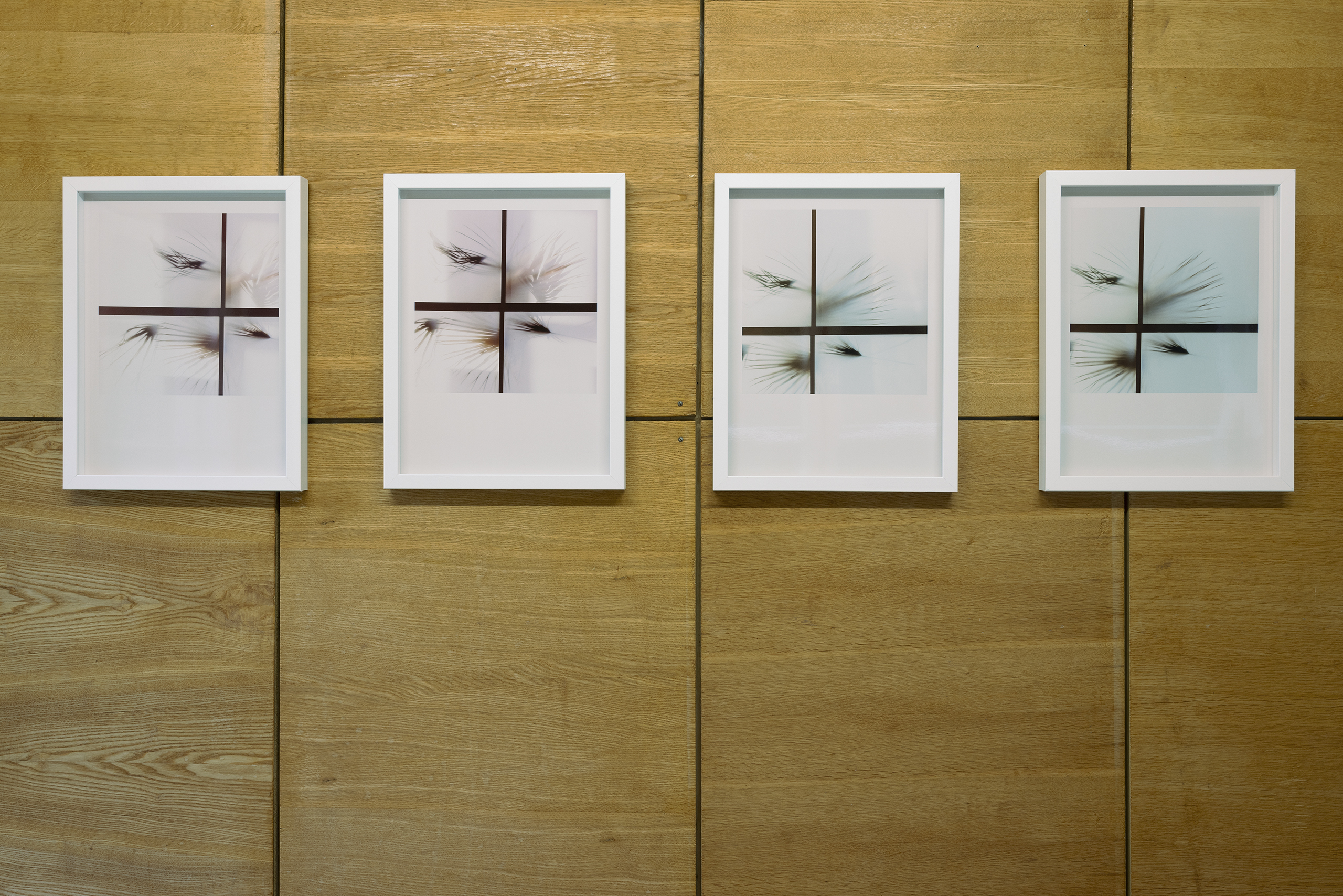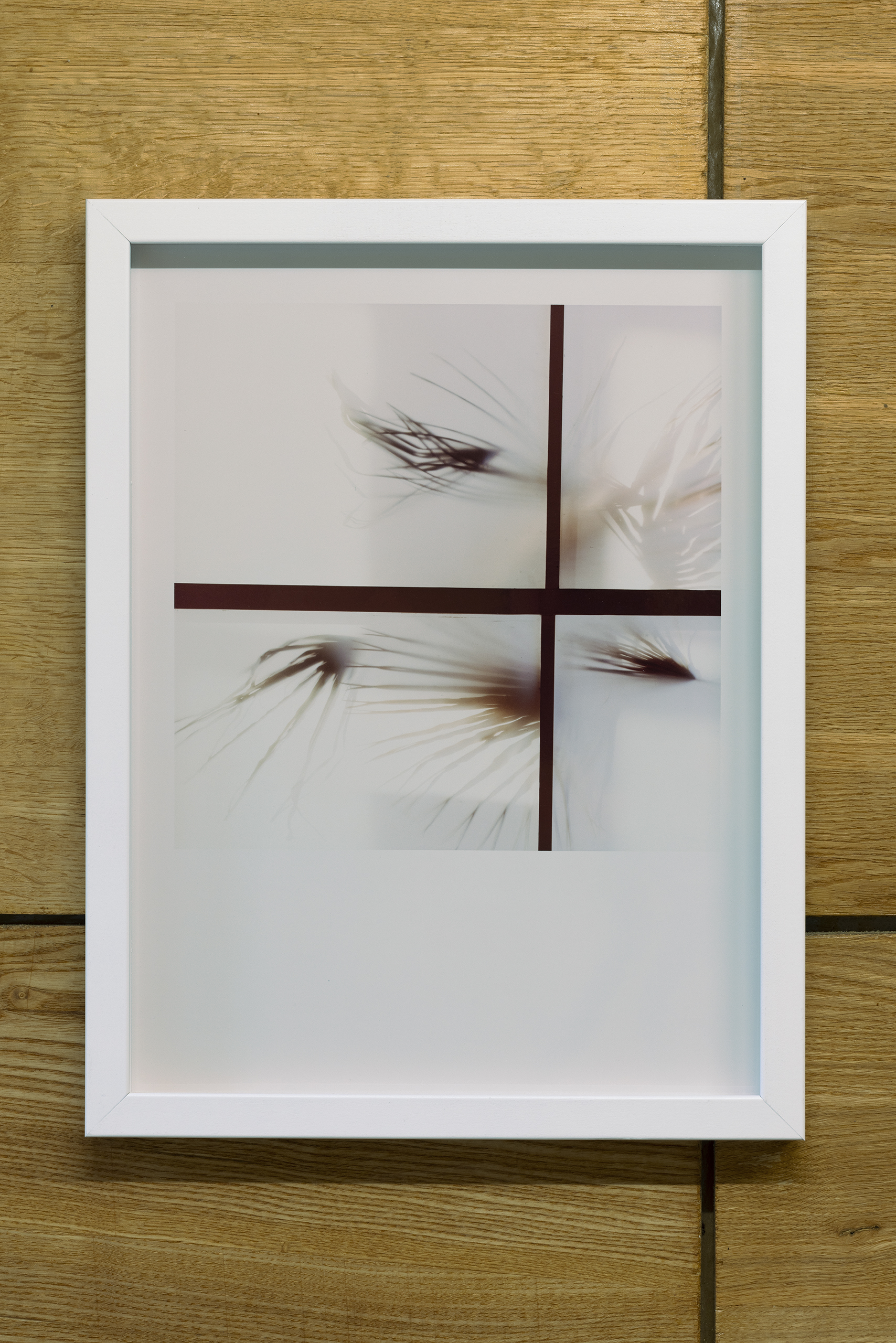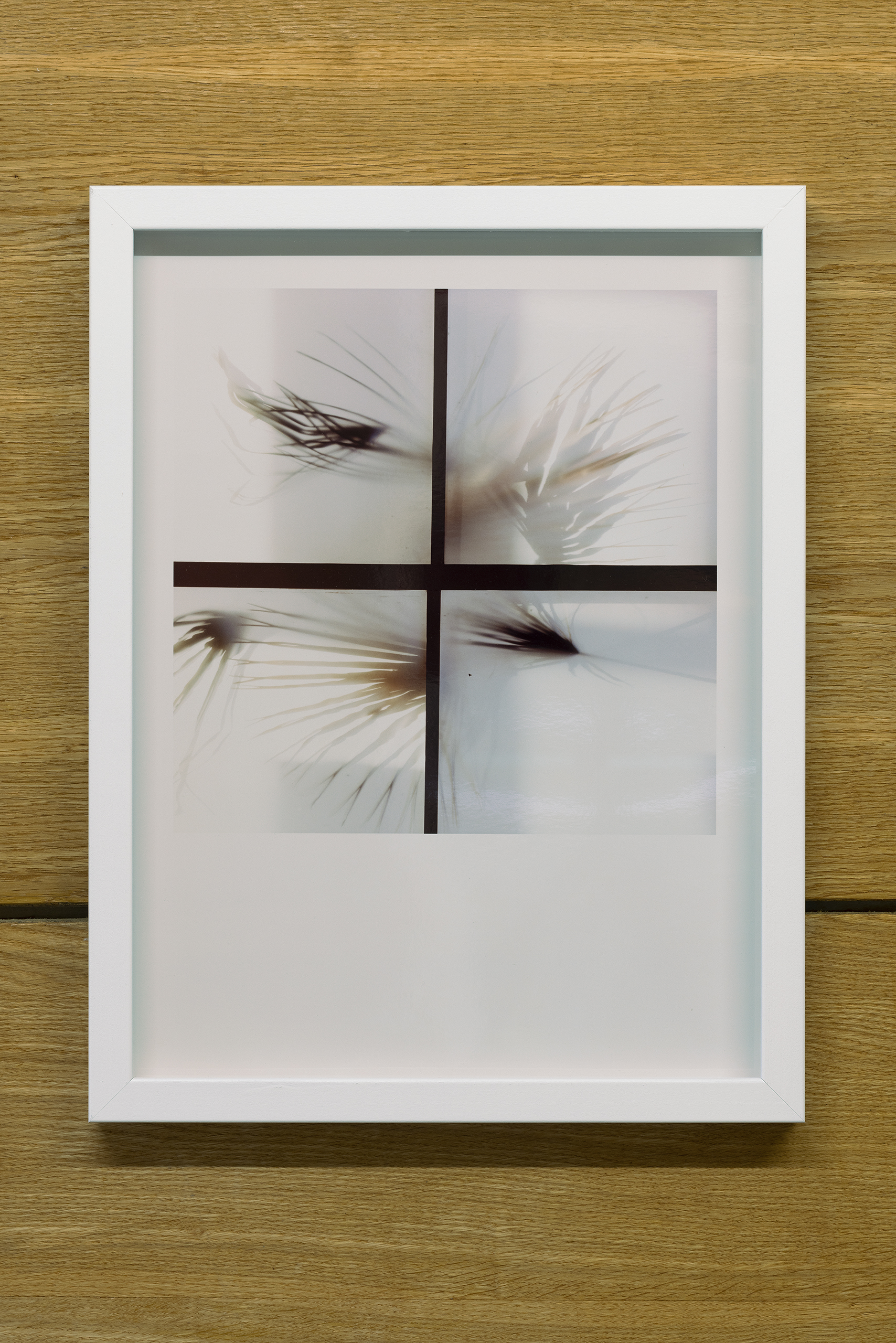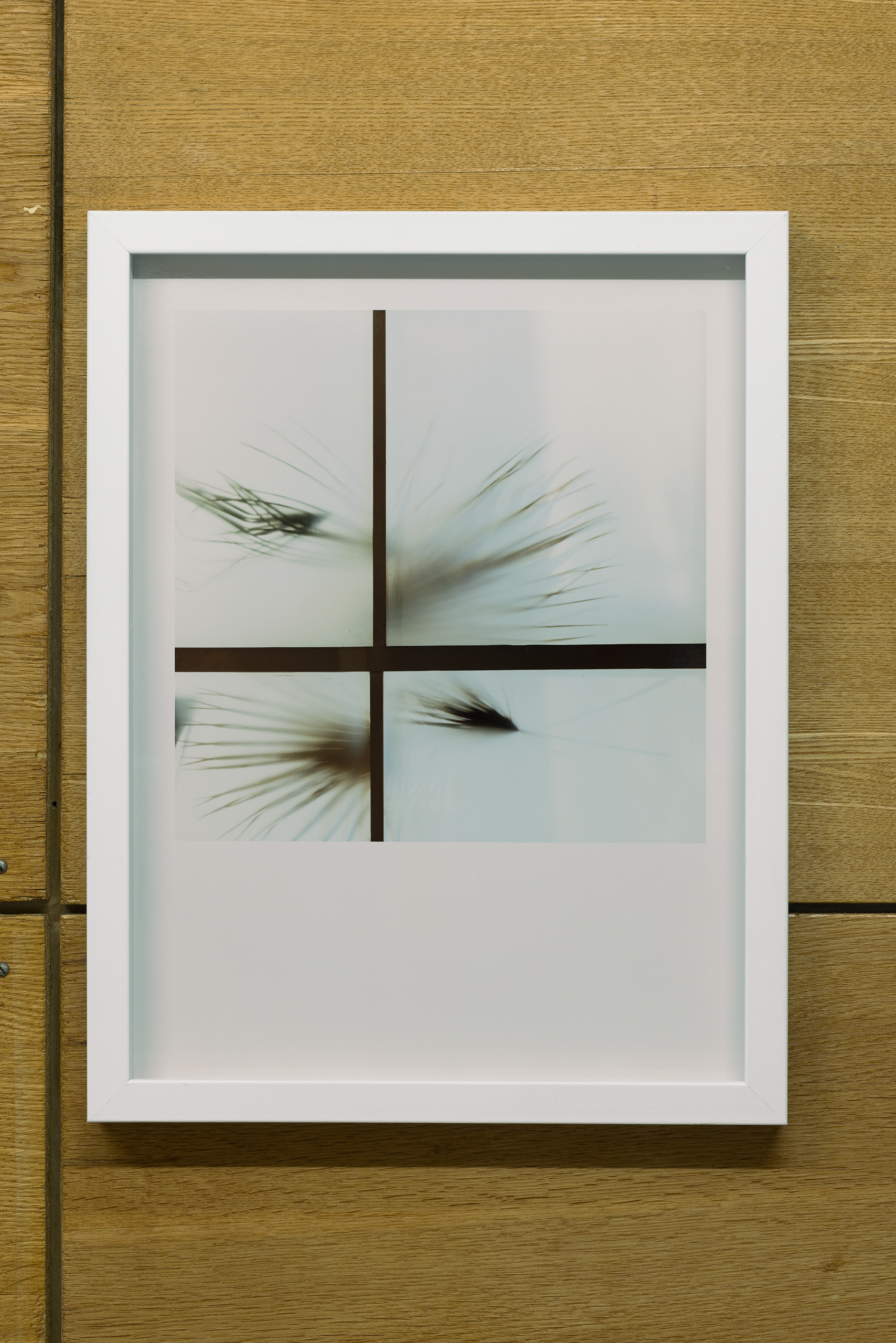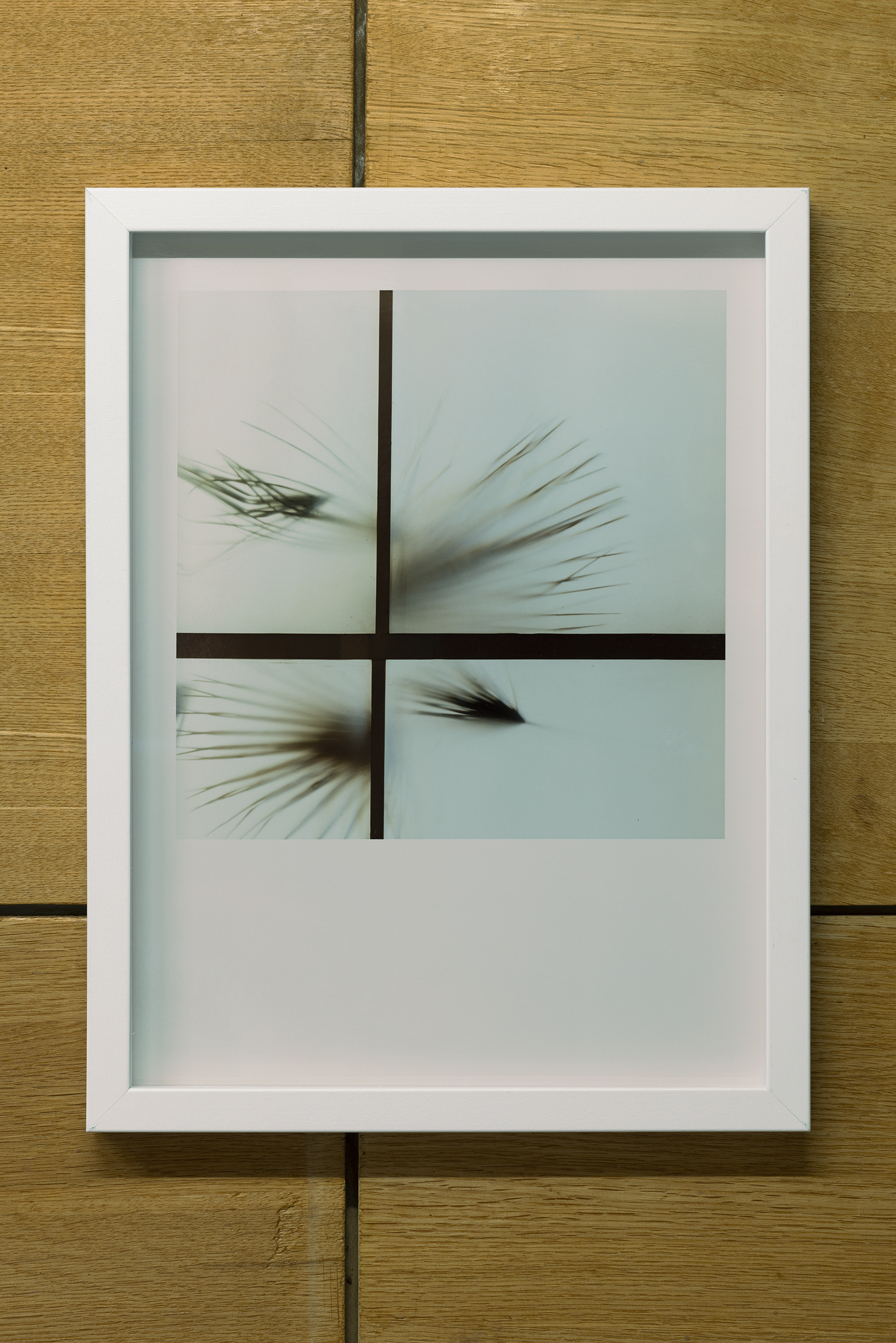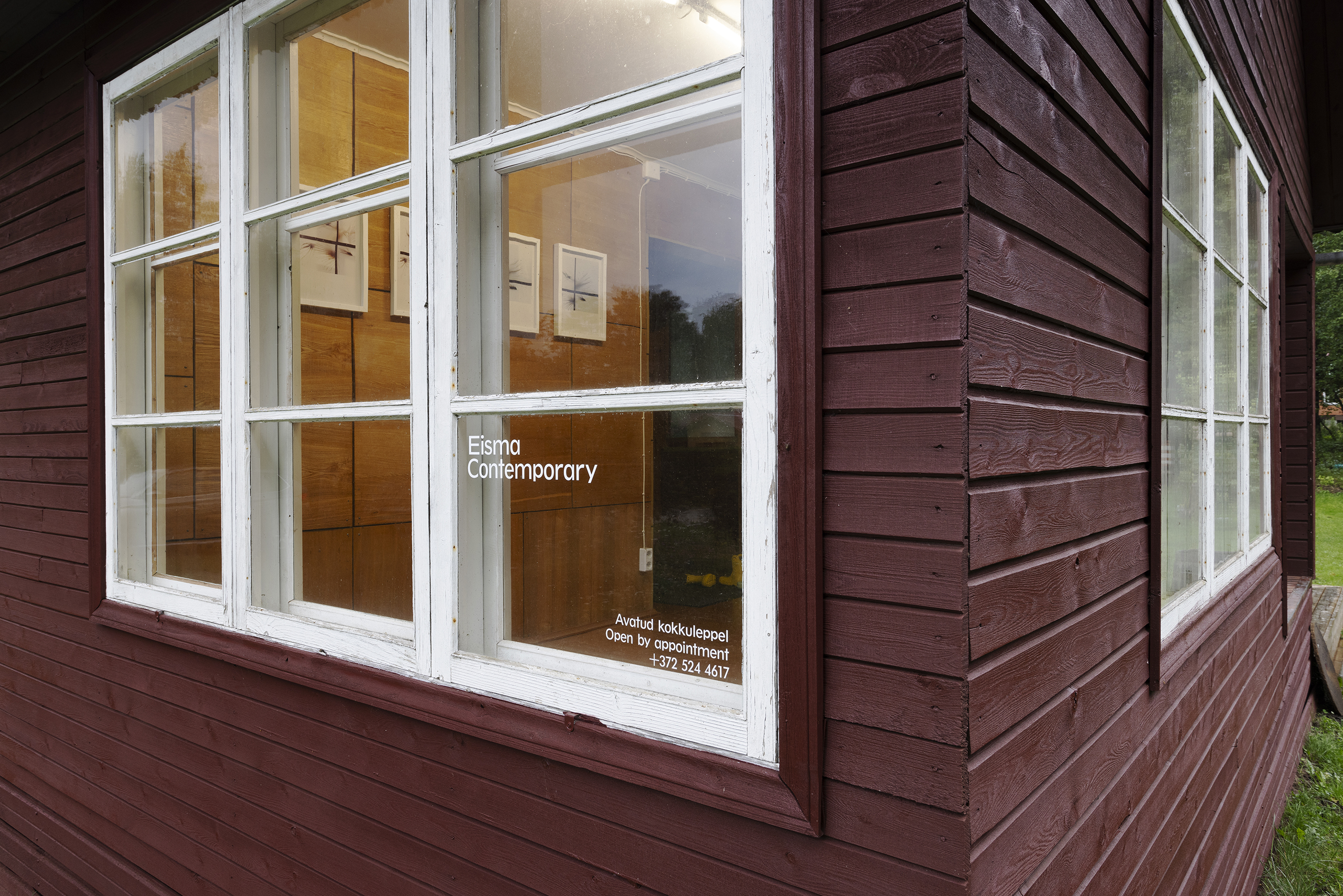C-prints
each 40 × 30 cm
The exhibition Dying Light, Studies opened a new seasonal exhibition space on the veranda of a summer house in the village of Eisma. The exhibition features a series of photographs that examine both the transformation of light in a specific architectural environment as well as the transformation of a space itself. Kuimet has captured the historic glass ceiling of the Tallinn Art Hall in his photographs, which will, during its ongoing renovation, lose its original ability to let natural light into the exhibition space. One could even say that these photographs have recorded the last natural light that fell through the glass ceiling into the main hall.
In Kuimet’s recent work, both the depicted material and the material that carries the image are often indivisible. Here analogue technology allows the light falling on the glass ceiling to have the most direct path onto the light-sensitive paper, with only the negative inside the camera acting as an intermediary. The plant motifs visible in the photographs refer to another motif beloved by Kuimet as the botanical gardens built to collect and exhibit the latter are some of the best-known historical examples of glass architecture.
In the case of holiday culture and summer homes, the equivalent of such glass architecture is a greenhouse, pavilion and veranda, which in an architectural sense is the simultaneous existence of indoor and outdoor space as well as the seasonal shift of the boundaries between them. By bringing the exhibition to a beloved gathering place – a friends’ summer home – the artist juxtaposes a highly non-institutional space with the oldest exhibition hall in Estonia. The visitor is presented with a formal dialogue between the glass surfaces of the veranda and the glass ceiling of the Tallinn Art Hall. This seasonal mini-exhibition is not only playful because of its juxtaposition and disguise as a seasonal institution, but also because it borrows the son of the family’s playroom for the entire summer and lines this space with rigid modernist forms.
Text by curator Laura Toots
